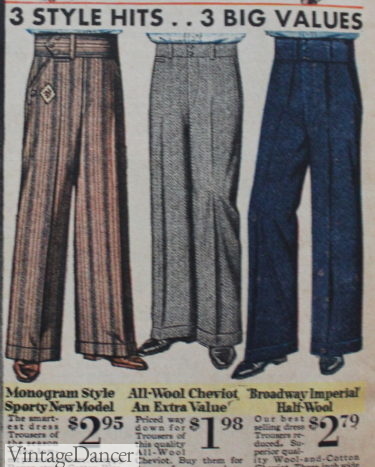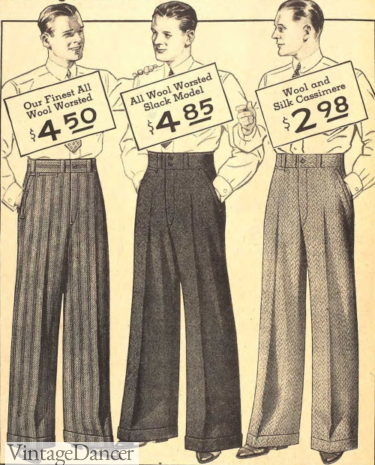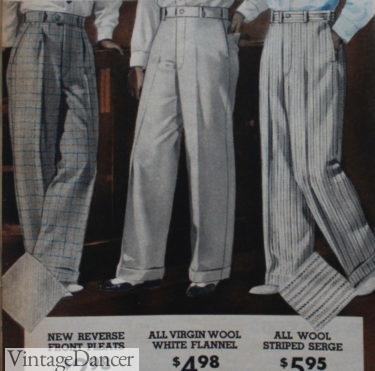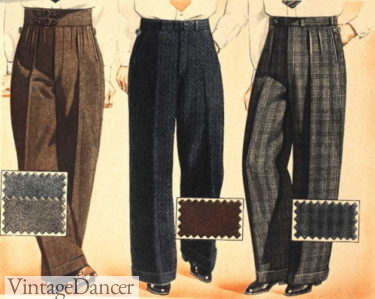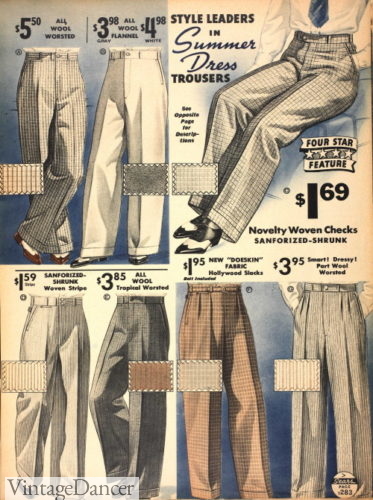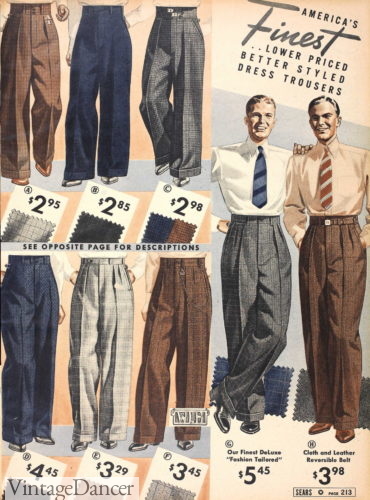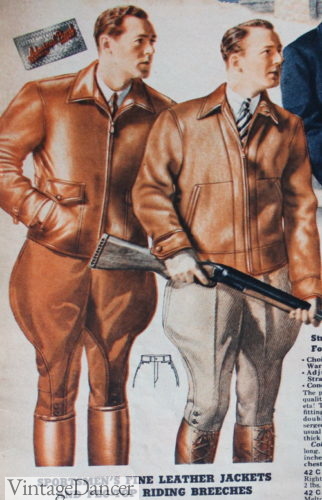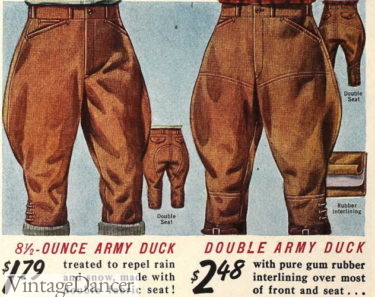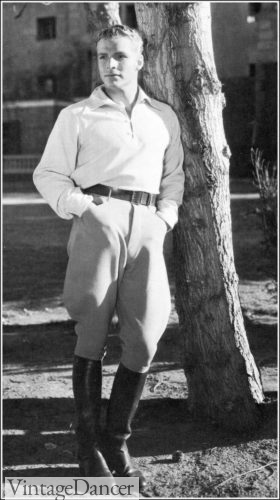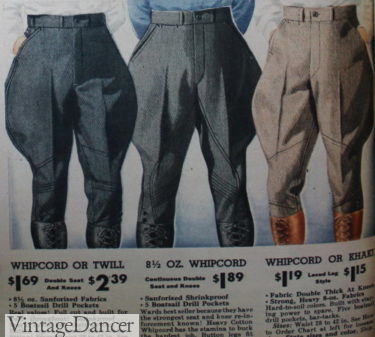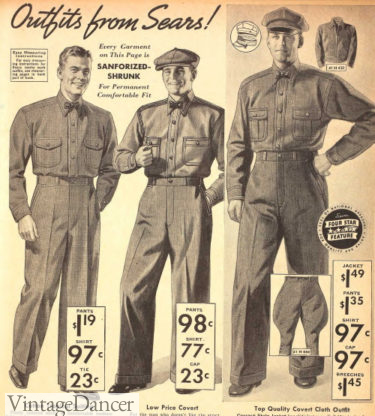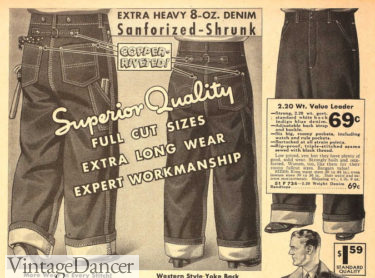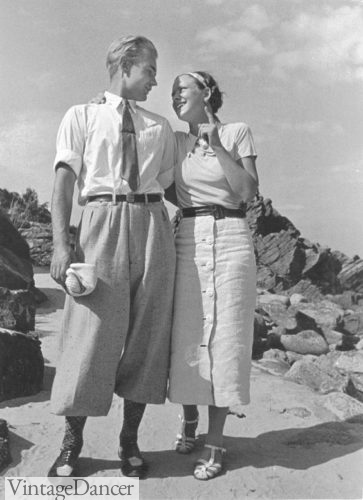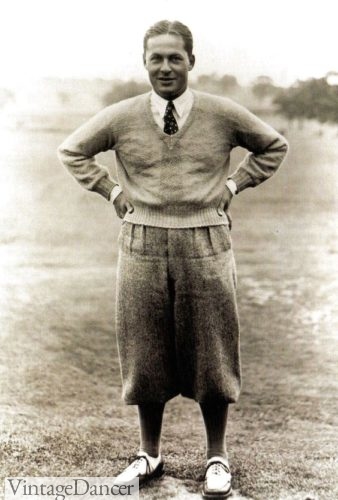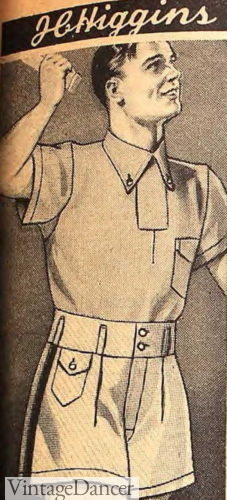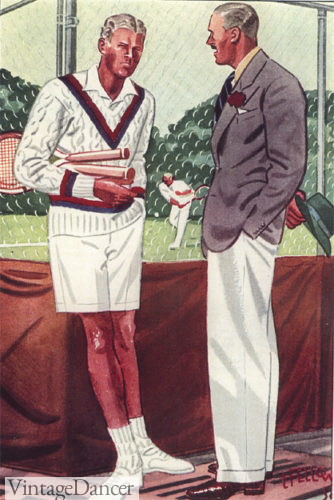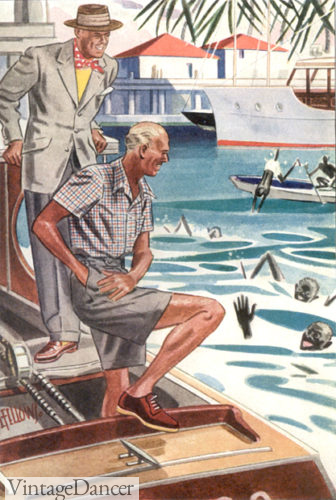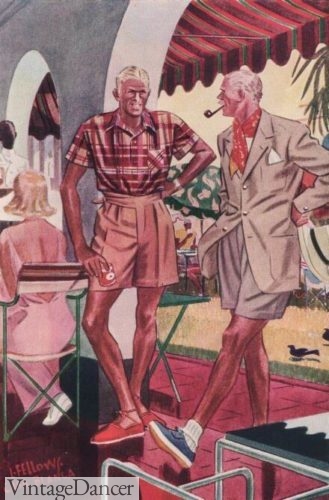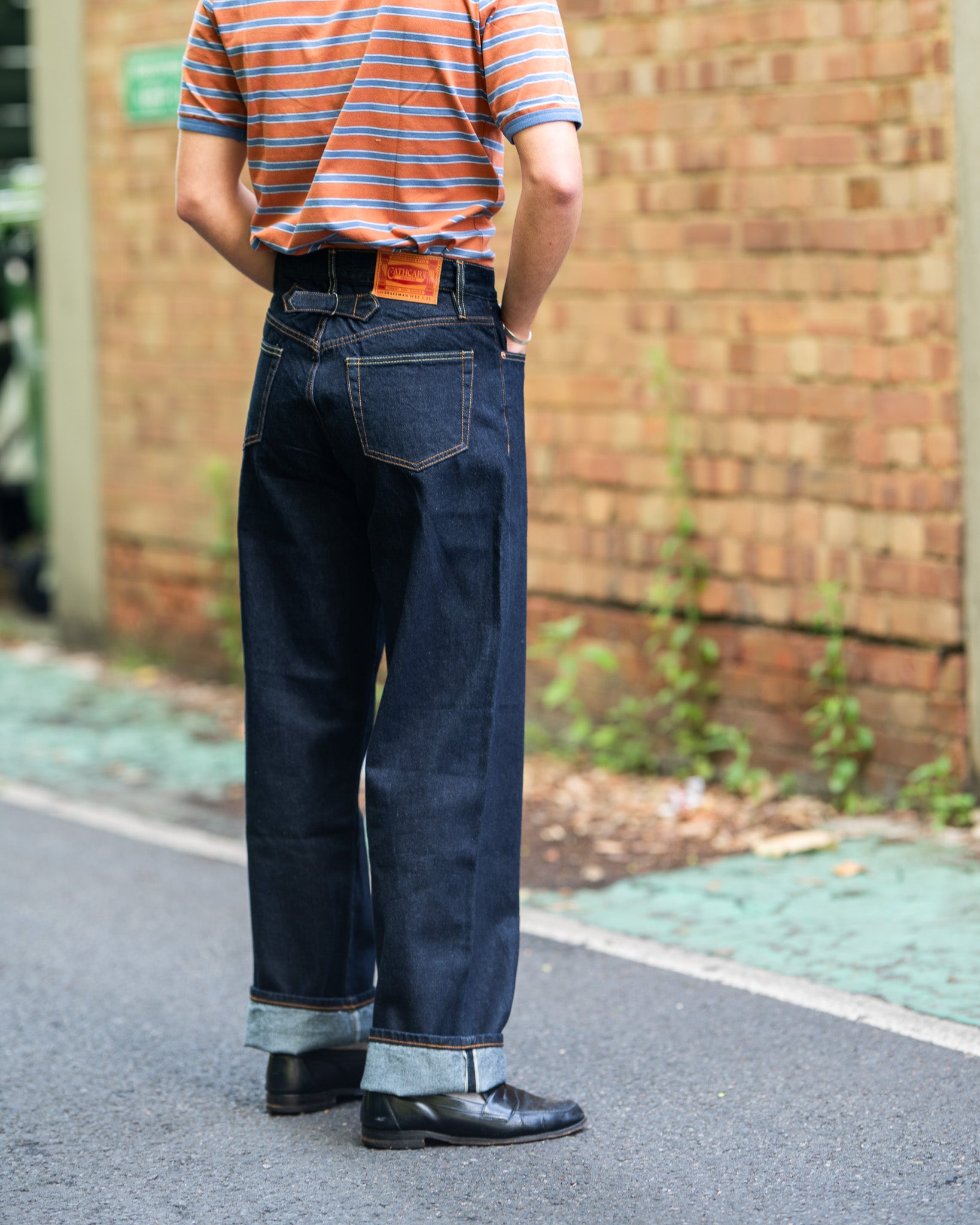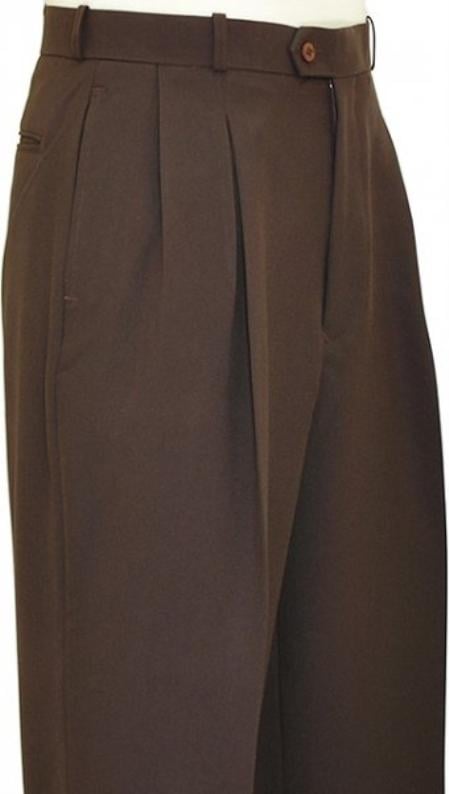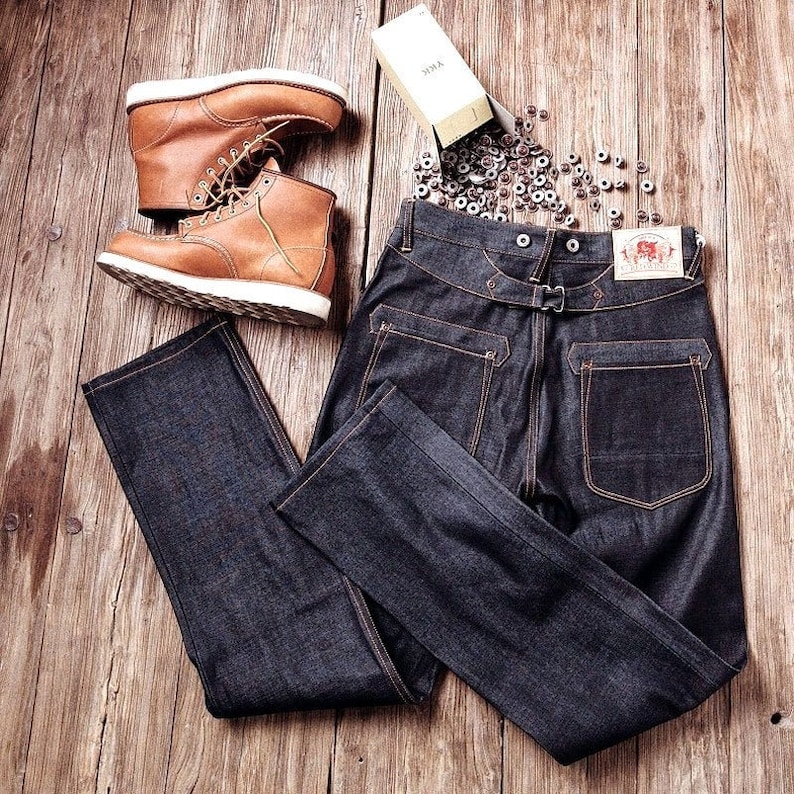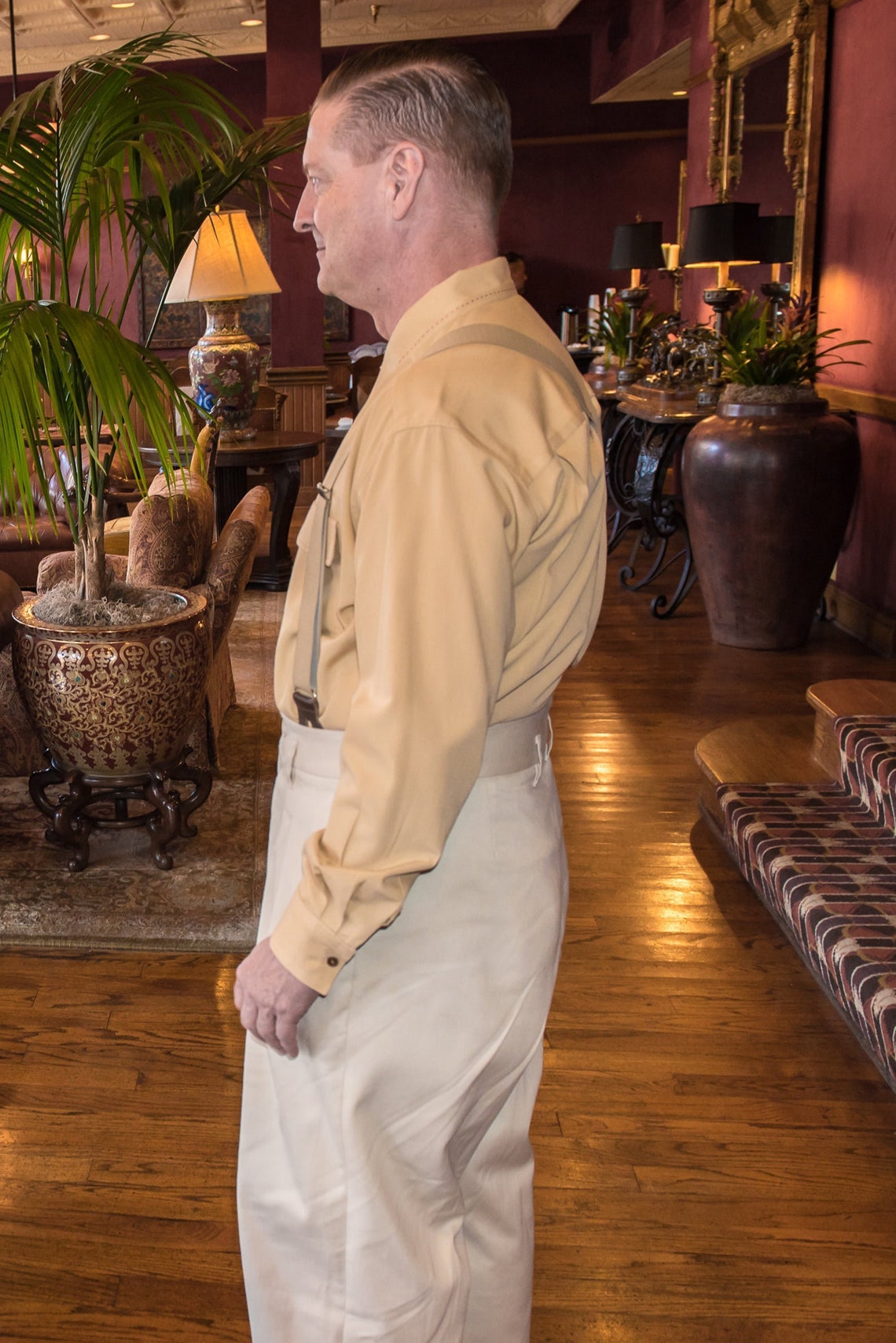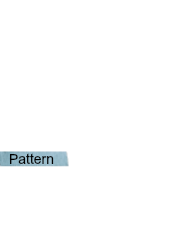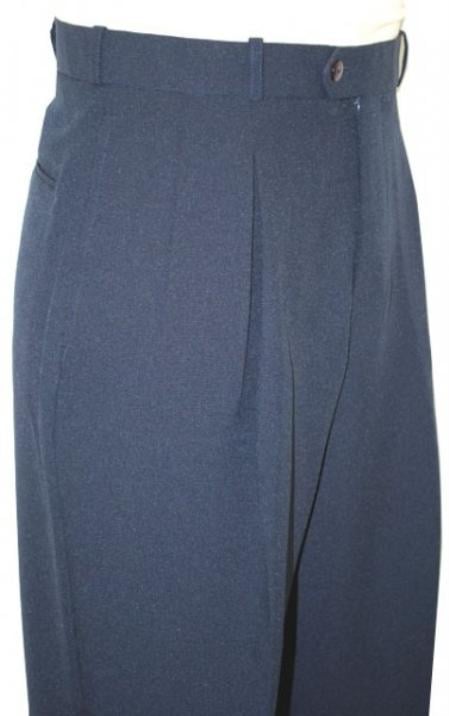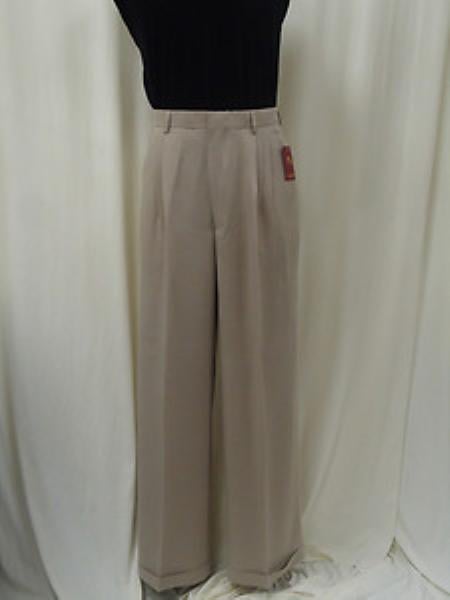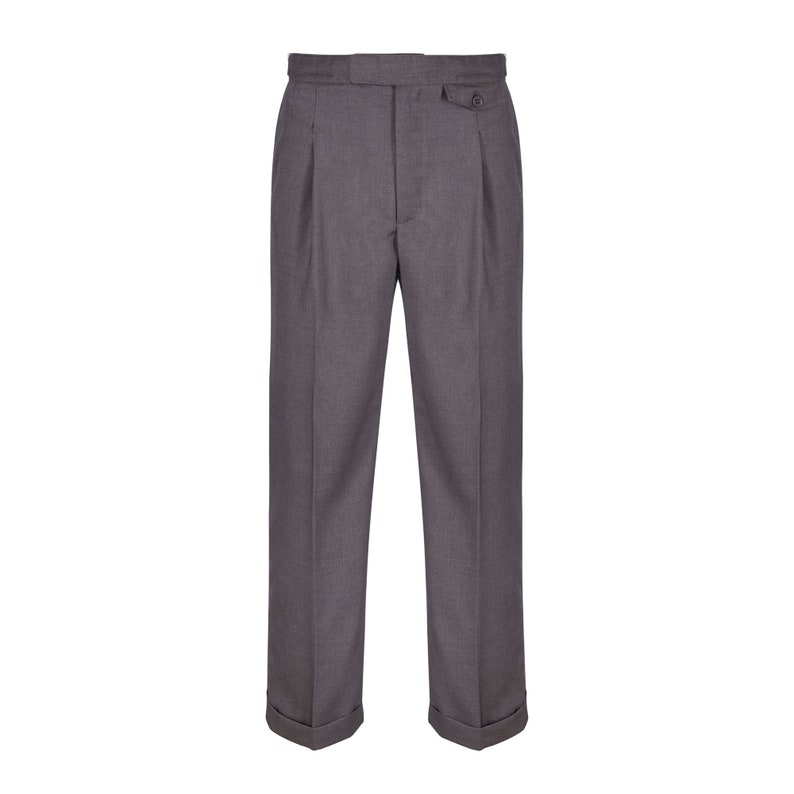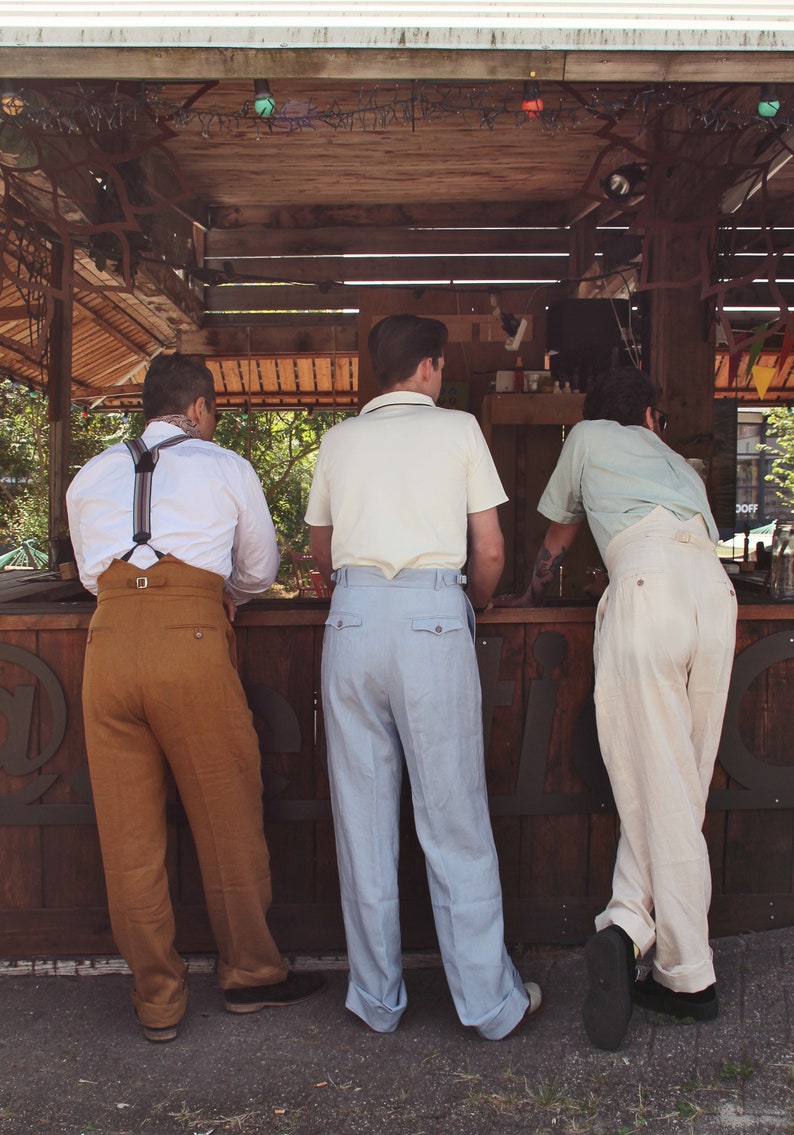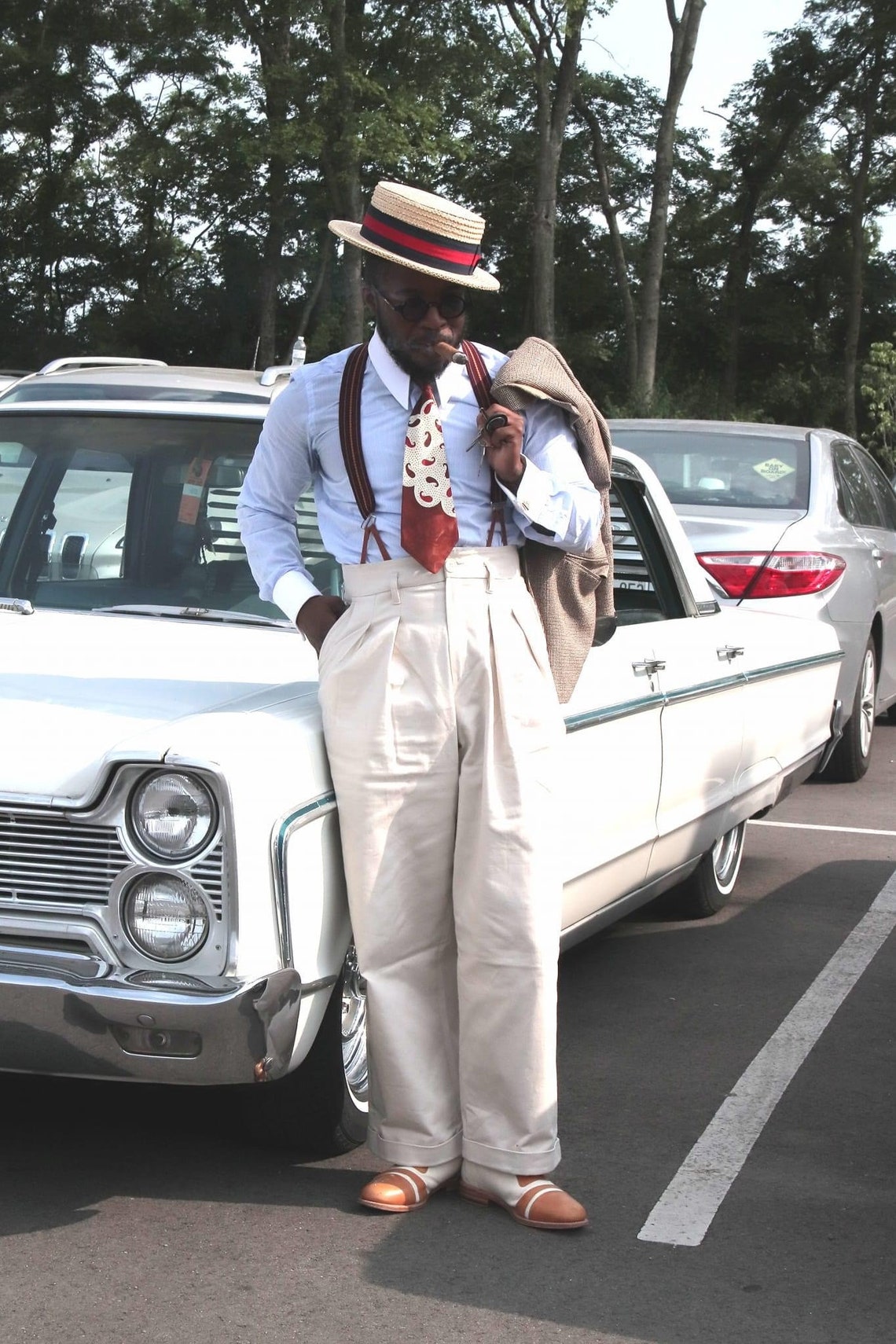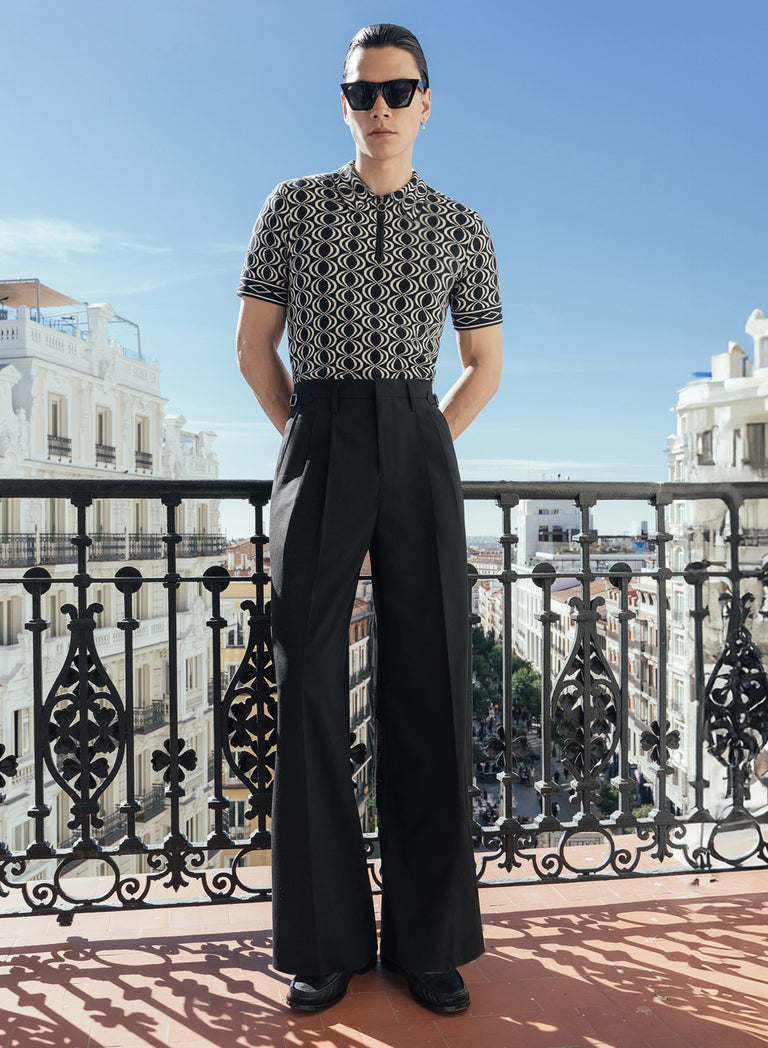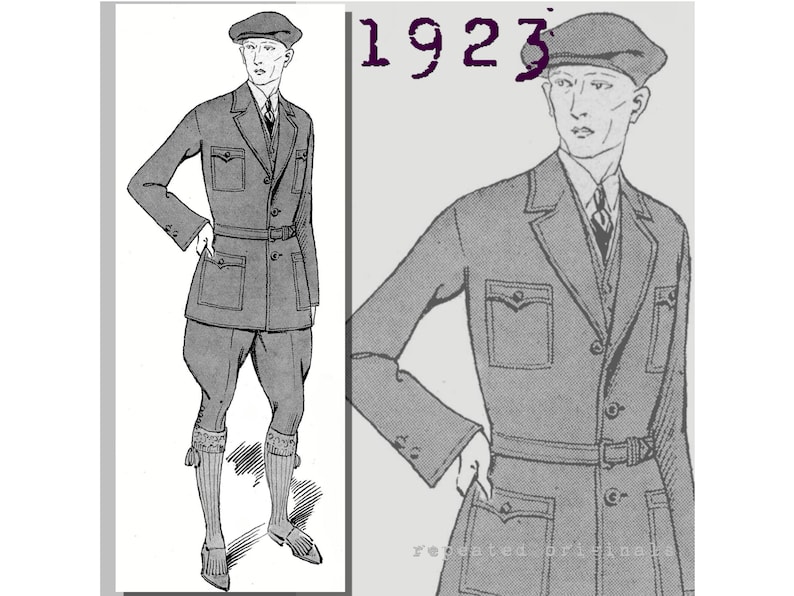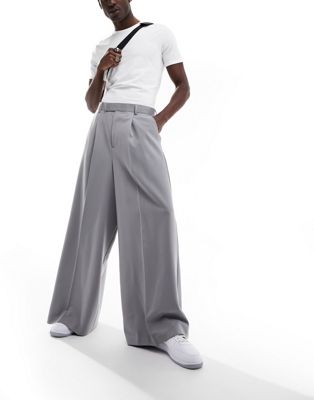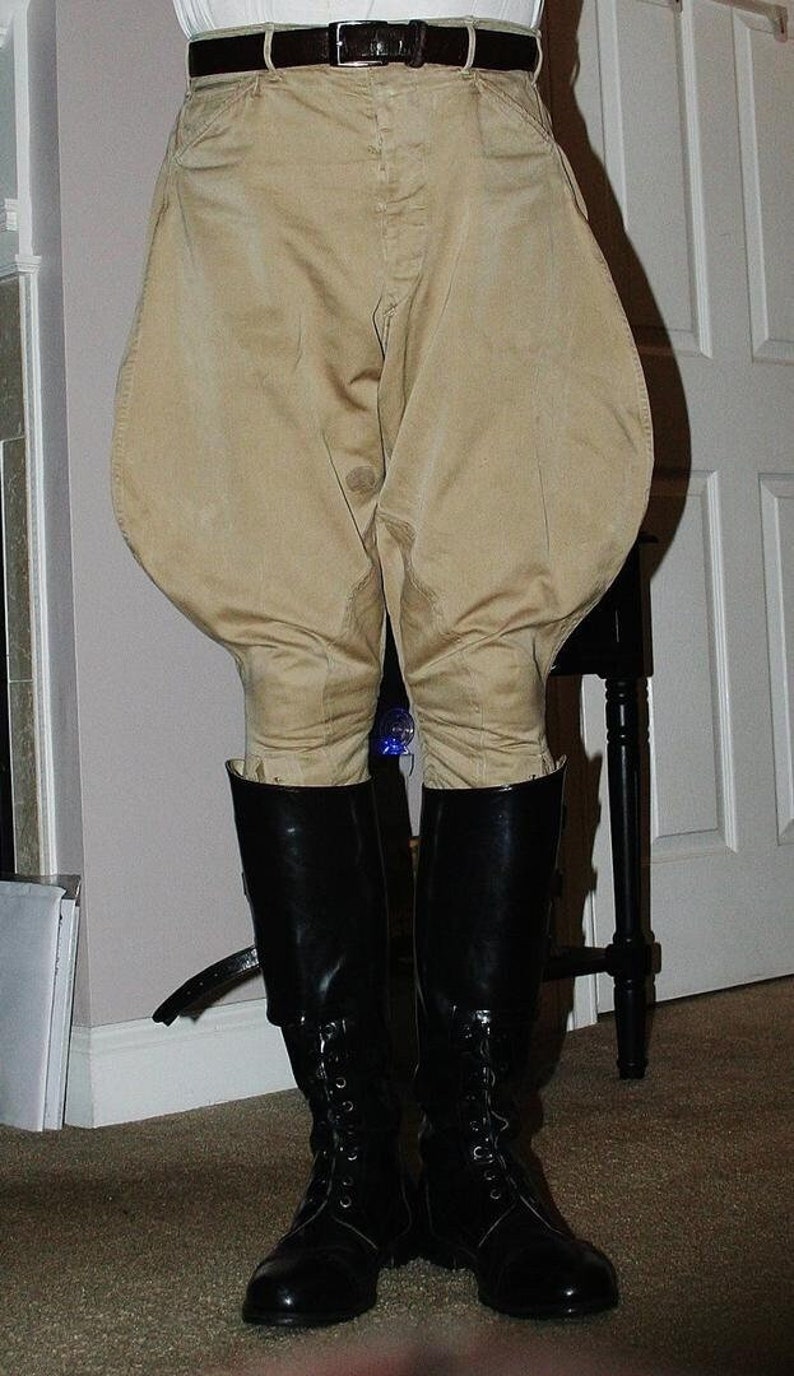The golden age of Hollywood propelled men’s fashion into new masculine shapes, beginning with trousers. The wide leg style of the 1920s only grew wider and fuller in the 1930s, and waistbands expanded as well to support the weight of the excess fabric.
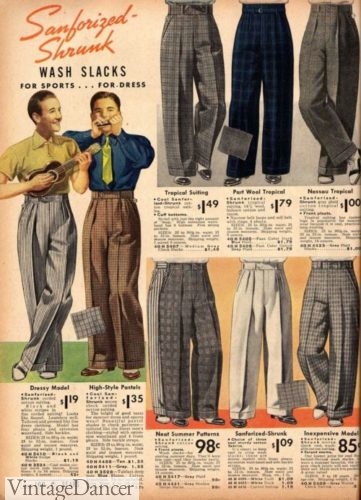
1938 Men’s Casual Trousers
Both single pleats, double pleats, and flat front trousers were made with a 22 inch leg at the cuff in 1930, and a slightly smaller 2o inch leg by 1935. Cuffs were a deep two to three inches and had a center pressed line down the front legs. Pockets were hidden slits or slashes.
The fit of the trousers was designed to sit very high on the waist (almost to the ribs) and also very deep in the seat. The crouch dropped almost to the knee, which feels odd to wear now. The long fly echoed the dropped crouch.
- 1930 Striped and Plain Trousers
- 1934 Wide Leg Trousers
Waistbands were varied in styles from the ultra wide look with two or three stacked buttons, called the high waister, to a more more traditional waistband with dropped belt loops.
There were also D ring buckles on the sides or front, to cinch in the waist without a need for belt or suspenders (then called braces). The extension waistband had a single tab that buttoned left of center. Adding a monogram on the waistband was also very trendy. These are only a few of the many waistband treatments of the time.
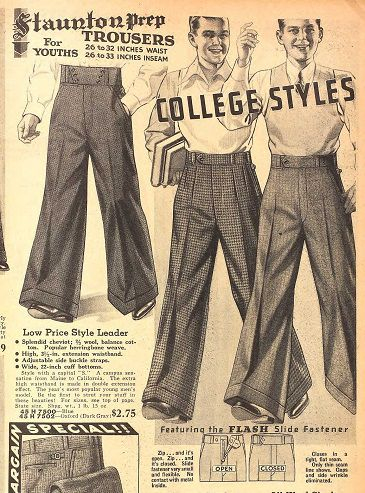
1935 College Styles with Hollywood Waistband
The newest invention in the 1920s, the zipper fly, was more prevalent in the 1930s. Men feared them at first — the sliding metal teeth in a precious zone seemed destined for tragedy. Heavy marketing around the improved, smooth look compared to gaping button flys eventually outweighed the hesitation for many men.
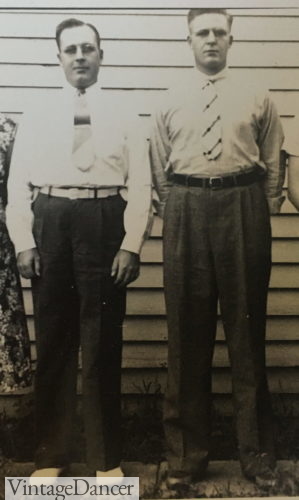
Pleated Trousers with Belts
Trousers were made of cashmere wool, worsted wool, or tweedy wool in winter. Summer had lighter rayon-wool blends, rayon-cotton bends, seersucker, gabardine, linen, and Palm Beach cloth (a blend of mohair and cotton).
- 1937 Summer Trousers of White and Grey
- 1937 Fall and Winter Colors/Patterns
Colors were more varied than the 1920s. Deep blue, brown, and grey were winter classics while summer shades favored oatmeal, pearl grey, cream, white, and tan. Green was the newest color coming in at the end of the 1930s.
- 1937 Summer Casual Trousers
- 1938 Dress Trousers
Besides solid colors were patterns of Glenn plaid, checks, windowpane, thin stripes, and herringbone. The best part about 1930s men’s trousers were the distinct patterns. Subtle was dull, pattern was strong.
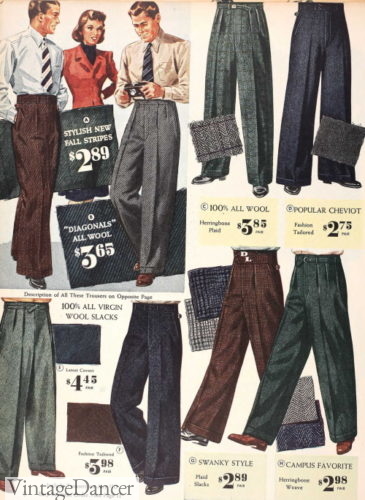
1939 New Colors for the End of the Decade
See more examples of men’s 1930s casual fashion.
Breeches
Breeches or Jodhpurs were still a working man’s uniform for certain occupations, such as managers, chauffers, and film makers. They were also used as sportswear for rugged outdoorsmen (hiking, hunting, riding horses) and daredevil hobbies (aviation, motorcycle riding).
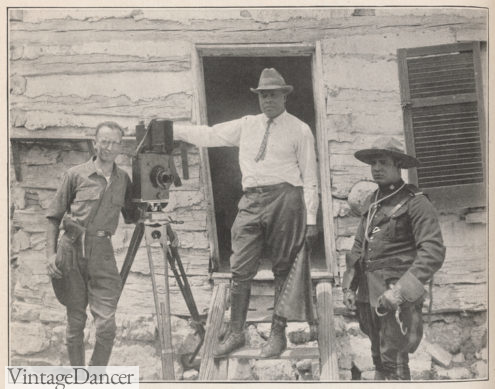
Micheaux Film Corporation producers wearing breeches
The large ballooned hips tapered down to the knee and then laced, buttoned, or zipped tightly over the calf. A zipper fly replaced the button fly on later models.
- 1938 Hunting Outfits
- 1939 Hunting Breeches
A pair of over-the-calf lace up boots or leather puttees (gaiters) with ankle boots completed the look. The inside leg and back seat were reinforced with extra fabric, suede, or leather.
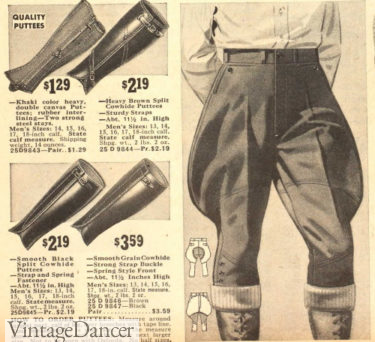
1939 puttees and breeches for work or uniform
Breeches came in durable materials such as twill cord, whipcord, duck cloth, leather, and khaki army cloth (WWI surplus) in brown, tan, grey, navy blue, and brush-green.
- Buster Crabbe’s Riding Outfit
- 1938 Sport or Uniform Breeches
Workwear Trousers, Overalls, Denim
Learn more about men’s 1930s workwear clothing and western denim jeans here.
- 1938 Uniforms of Matching Shirts and Trousers
- 1937 Denim Work Pants
Knickers
The plus fours (knickers) of the 1920s continued to be worn in the 1930s, but now favored longer plus 6 or plus 8 lengths. They slimmed down slightly too, creating an even tube shape over the legs and down to the low calf. Lighter colors were preferred over the dark browns of the 1920s for casual and golf wear.
- Plus 6 or 8 Knickers
- Bobby Jones Golfing in Plus Fours
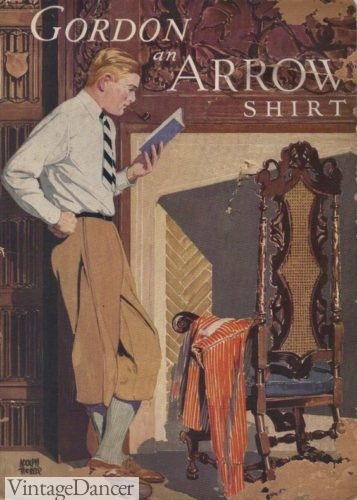
In winter, ski knickers were the most comfortable pant to wear with the knit cuff tucked into thick wool socks and ski boots. By the end of the decade, knickers were replaced by peg-top ski pants — a hybrid between trouser and knicker.
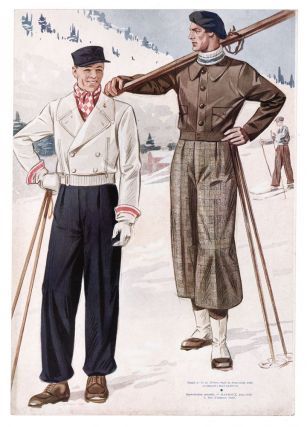
Ski Pants and Knickers
Shorts
Although shorts had been used for gymnasium and tennis in the 1920s, they weren’t widely accepted until British Tennis champion Bunny Austin wore a pair of short white flannel shorts in 1932 at Forest Hill in Long Island. After that, clothing designers were making “ventilated pants” for the sportswear market. White flannel shorts were seen all over tennis and squash courts in the 1930s.
- 1935 Short Men’s Tennis Shorts
- 1930s Men’s Tennis Shorts
Occasionally shorts, they were worn in upper class resorts at the peak of summer. Shorts had already been accepted in hot tropical climates such as the Bahamas, India, and Jamaica for many years, but for the average American, they were a novelty.
The Ghurka waistband became one of the carryover details from British military shorts. Otherwise, the same trouser waistbands were applied to men’s 1930s shorts.
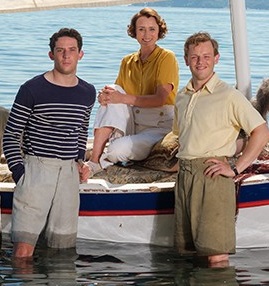
The Durrells series, set in Corfu, has many characters wearing shorts
Walk shorts were trousers cut just above the knee, while short “resort shorts” hovered around mid thigh. The waistband was high and pleated fronts kept them baggy for modesty.
- 1930s Men’s Walk Shorts
- 1930s Men’s Pleated Shorts
When shorts were being worn at golf courses, they copied the same patterns and colors as knickers. Paired with tall patterned socks and a polo shirt, they were outlandish compared to street and office wear.
Besides flannel, shorts came in breathable slubbed cotton, textured mesh, rough linen, and khaki. Shirts often were sold in matching fabrics.
Shop vintage style men’s shorts.
Read More
- 1930s Men’s Workwear
- 1920s Men’s Casual and Sporty Outfits
- Men’s Swimwear History, 1930s-1950s
- 1920s Men’s and Women’s Tennis Clothes
- 1930s-1950s Western Wear
1930s Style Men’s Trousers
While there are only a small handful of reproduction 1930s men’s trousers designers, you can get close enough look with a pair of wide leg and high waisted trousers. These can me found online or possibly at local shops catering to the Urban male. Here are some options:
Debbie Sessions has been teaching fashion history and helping people dress for vintage themed events since 2009. She has turned a hobby into VintageDancer.com with hundreds of well researched articles and hand picked links to vintage inspired clothing online. She aims to make dressing accurately (or not) an affordable option for all. Oh, and she dances too.
